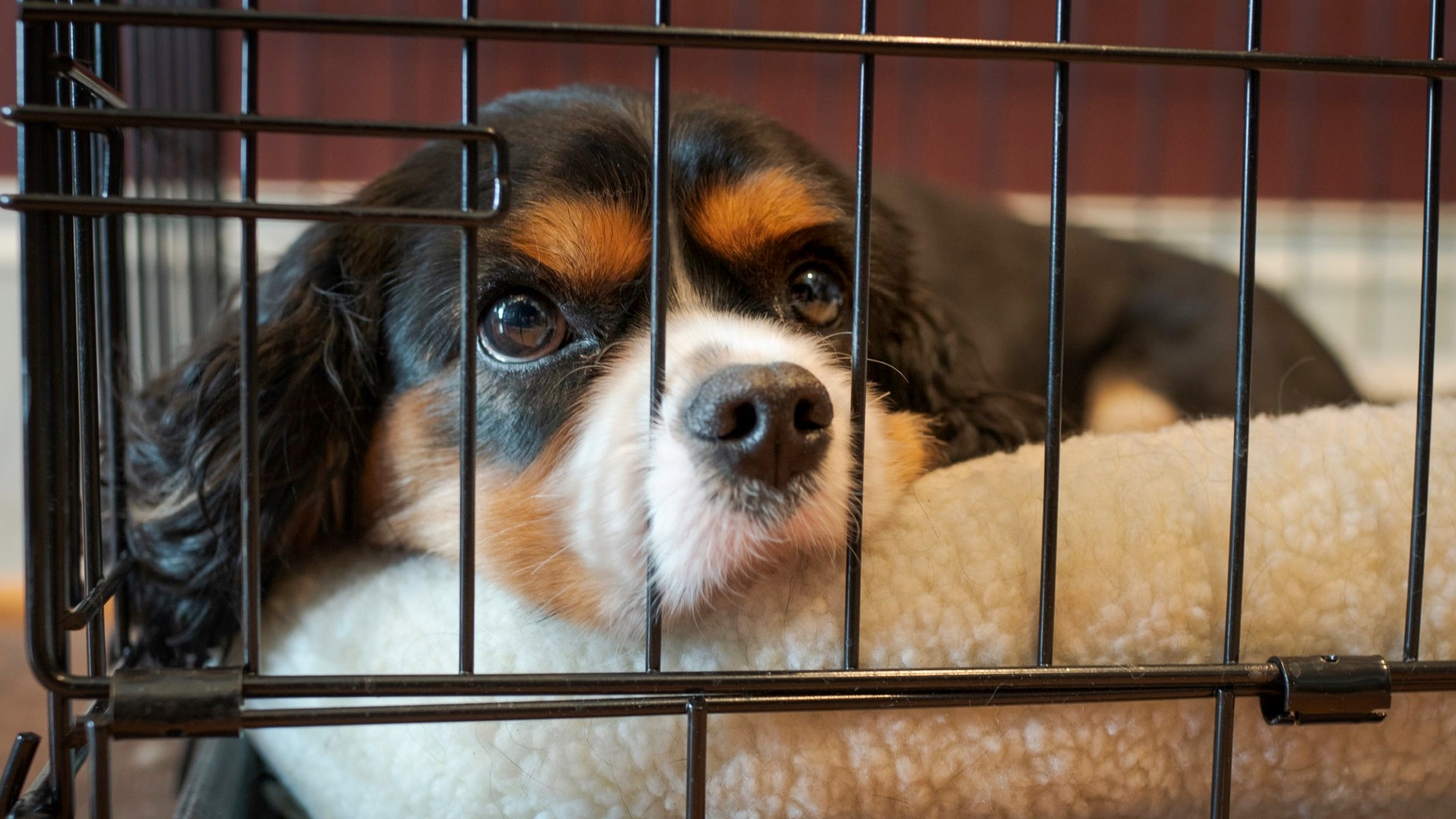Crate Training Your Dog:
Building Duration
Summary:
Learning how to crate train your dog will require patience. You will need first get your pet comfortable with the crate, then comfortable sitting inside the crate. Only after that will you be able to proceed in building up the duration of time spent inside. It is important to take your time. Rushing here will only make your dog uncomfortable.


Building Duration
If your dog is comfortable with the door closed for a few seconds, gradually increase the time the dog is in the crate. Remember to use a release cue to tell the dog that he can leave. If your dog does not have a problem remaining in the crate calmly for several minutes, start closing the door and ducking out of sight for a second before returning. Gradually build up the amount of time your dog is in the kennel. If the dog starts to whine, ignore him, letting the dog out once he is calm. If you want to leave your dog in the crate for extended periods, try putting a stuffed Kong, a bully stick, or a safe chewie into the crate.
All through this training process, it is essential to be patient and not push your dog. Ask for what your dog is comfortable with rather than forcing your dog to do what you want. Crate training is best done in baby steps. If you can get your dog or puppy comfortable with the crate before the first night, your odds of getting good sleep that night will be much higher. Once your dog is crate-trained and house-trained, you can leave the dog in a crate for up to 8 hours. The dog should have good exercise before and after and should be left in the crate with something safe to occupy his attention. Your dog will likely spend most of the time sleeping!
Younger puppies cannot be left in a crate for as long as 8 hours. Physically, puppies cannot hold their bladders long enough, and it isn't fair to ask for that. An excellent general rule is one hour in the crate for each month of age. A three-month-old puppy should be fine in the crate for three hours. Puppies should sleep in their crates at night, as this helps them learn to sleep through the night. Place the crate directly beside your bed in early training so your puppy will not feel lonely and frightened and can wake you quickly in the middle of the night for a bathroom break.


